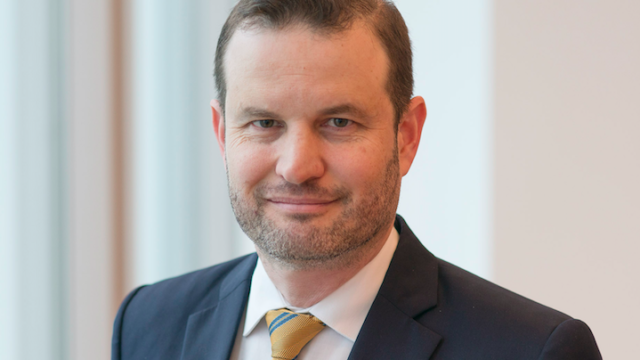James Gifford, UBS Wealth Management
“The goal of this strategy is to replicate a traditional strategic asset allocation in a way that not only delivers sustainability outcomes but does in a way that will match traditional strategies in terms of risk and returns,” James Gifford, Hong Kong-based head of impact investing, said at a recent media briefing in Hong Kong.
Because the aim is to replicate a traditional allocation, the new product is not positioned as a theme or a satellite strategy, but a core portfolio, said Mischa Eckart, Singapore-based head of client investment specialists for Asia-Pacific.

The minimum investment is $500,000, which is not an outsized commitment when compared to the other offerings in the private banking world, he said.
The launch of the product comes at a time when the firm is seeing increasing client demand for impact investing, with several of its impact funds gaining popularity among Asian investors.
The firm did not provide dollar figures for sustainable investment assets. However, officials said that assets under management sourced from Asian clients grew 7x over the last three years. Sustainable investment assets also grew 80% in calendar year 2017, and the firm plans to aim for the same growth rate this year, according to UBS.
‘ESG leaders’ is not enough
The portfolio composition is divided into categories. It has four categories under the strategy’s equity sleeve and three under the fixed income sleeve.

The portfolio invests in both active and passive funds, according to Mario Knoepfel, Hong Kong-based client investment specialist and head of sustainable investing advisory for Asia-Pacific.

The firm believes that using various categories will help to capture sustainable and impact opportunities.
For example, most equity funds invest in ESG leaders, which are companies that have superior ESG and sustainability ratings, Gifford explained. In the portfolio’s equities sleeve, investing only in ESG leaders will not give investors access to the whole spectrum of sustainable or impact opportunities, he said.
“There are other pieces of the market which we believe can also have financial outperformance that are more sophisticated than just ESG leaders.”
For example, 14% of the balanced portfolio will invest in ESG shareholder engagement equities, which is a fund managed by Hermes Investment Management exclusively for the UBS product.
“We were specifically looking for an engagement strategy that is tied to the UN’s principles for sustainable development. But globally, there is no such strategy out there. Hermes developed this specific strategy for us.”
Gifford said that shareholder engagement is not a new concept. However, engagement usually begins after a firm has invested in a company. Hermes has a team that assesses the shareholder engagement potential of companies before investing, he added.
“What we wanted to do is build a portfolio that was designed from the bottom-up for the purpose of improving a company, so the potential for improving [ESG] is a huge part of the stock selection criteria.”

















